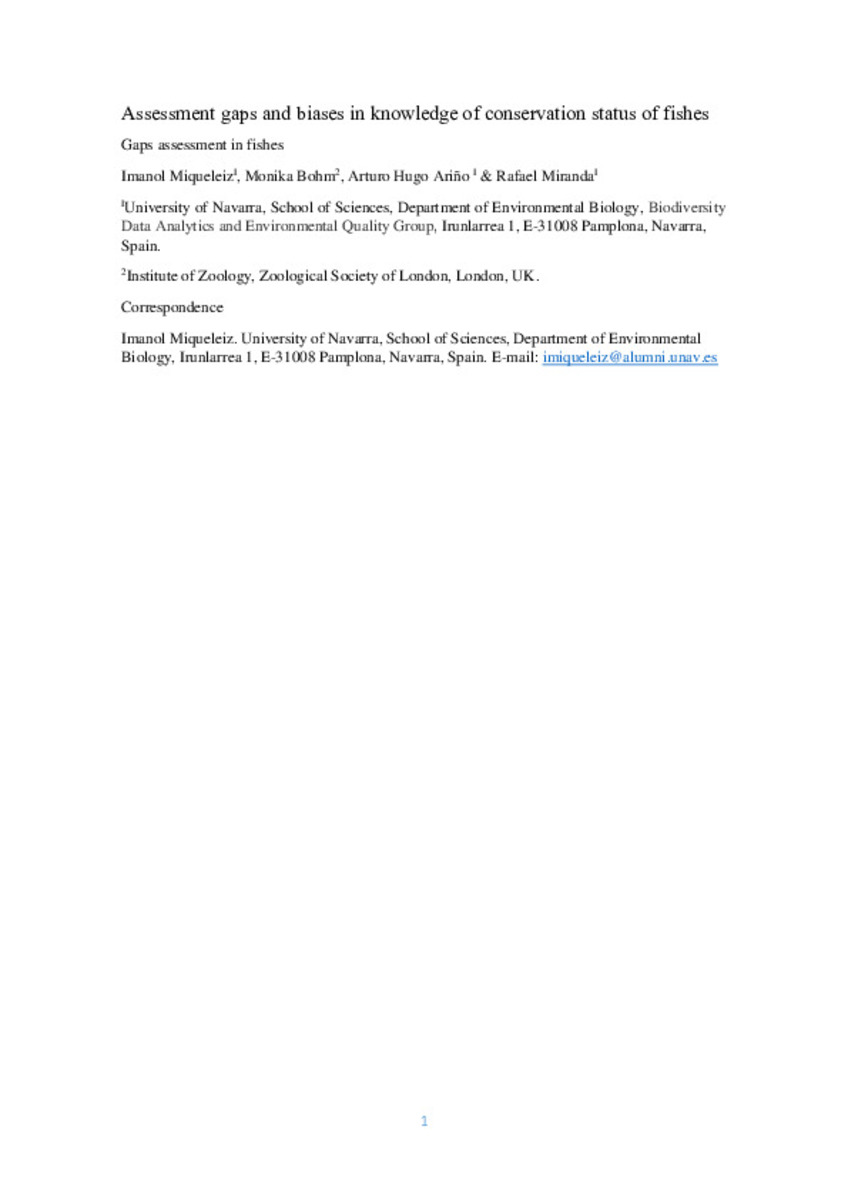Assessment gaps and biases in knowledge of conservation status of fishes
Palabras clave :
Distribution patterns
Extinction risk
IUCN Red List
Freshwater realm
Marine realm
Threatened species
Fecha de publicación :
2020
Cita:
Miqueleiz-Legaz, I. (Imanol); Bohm, M. (Monika); Ariño-Plana, A.H. (Arturo Hugo); et al. "Assessment gaps and biases in knowledge of conservation status of fishes". Aquatic Conservation: Marine and Freshwater Ecosystems. 30 (2), 2020, 225 - 236
Aparece en las colecciones:
Estadísticas e impacto
0 citas en

Los ítems de Dadun están protegidos por copyright, con todos los derechos reservados, a menos que se indique lo contrario.











